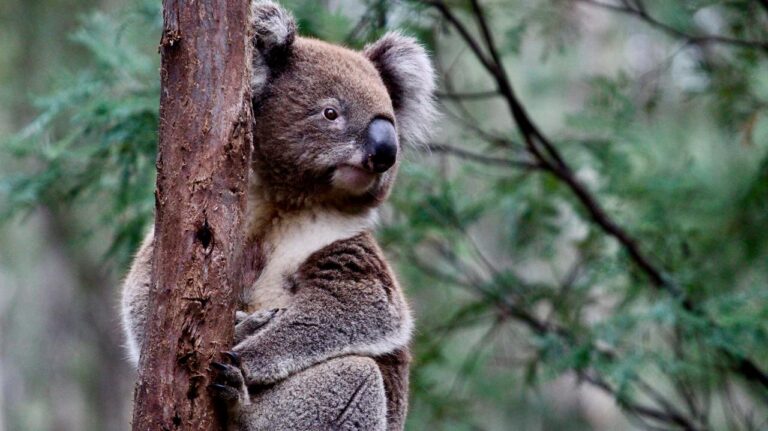Wild koala populations are most threatened by chlamydia. This disease spreads very quickly among marsupials, making it impossible to reproduce. Scientists are working on a vaccine, but the main competitor in the fight for the survival of large populations is time.
The Australian koala (Phascolarctos cinereus), one of the most recognizable species on this continent, is currently considered vulnerable to extinction. These marsupials are threatened by many factors – from natural disasters that destroy their native ecosystems to the increasing degree of urbanization in which they cannot survive. Chlamydia also reduces the number of animals, and for several years the number of sick animals has been increasing at an alarming rate.
“There are days when we have to euthanize dozens of koalas.”
Chlamydia is a disease caused by bacteria of the genus Chlamydia that is spread through contact with the body fluids of an infected person, often sexually. Although it occurs in many other mammals, its rapid spread in marsupials poses a serious threat to the entire population.
Michael Pyne, a veterinarian at a wildlife clinic in Australia’s Currumbin, told the BBC: “The number of cases has increased dramatically, even at an exponential rate.” – There are days when we have to euthanize dozens of koalas whose bodies have been completely destroyed.
Chlamydia manifests itself differently in different people. In some koalas it causes conjunctivitis and in others it causes genital and urinary tract infections. An eye infection can cause vision loss, while an infection of the reproductive system can cause huge, painful cysts that interfere with normal animal activity and reproduction.
“Their reproductive system just stops working,” Pine said.
Australian koala (Phascolarctos cinereus) – photo. image by Shutterstock
Difficult fight against disease
The extent of the infection is also worrying. It is estimated that there are only 50,000 koalas left in the wild, and several hundred are hospitalized each year. According to experts, in the states of Queensland and New South Wales, up to half of the population may be sick. Because of this, there are fears that in some areas these marsupials will disappear within a few decades.
As the veterinarians explained, if the infection is detected early enough, treatment is possible, but it can be dangerous for the animals. The antibiotic treatment that kills the chlamydia bacteria also kills the gut bacteria that allow the koalas to digest eucalyptus leaves, their main food source.
In Australia, there are many activities to save koalas. Scientists monitor the population of wild marsupials, catch sick individuals and transfer them to veterinary clinics. At the Queensland University of Technology, research is being conducted to create a chlamydia vaccine; Scientists at the University of the Sunshine Coast are also working on such a solution. Both vaccines are in clinical trials.
“No one wants to imagine Australia without koalas,” said Environment Minister Tanya Plibersek.
Main image source: Shutterstock

